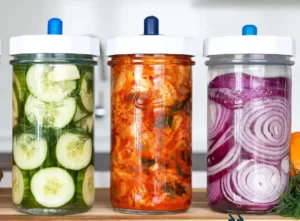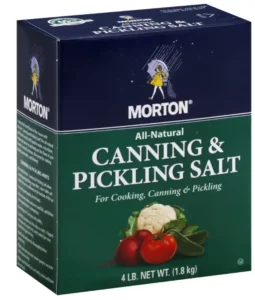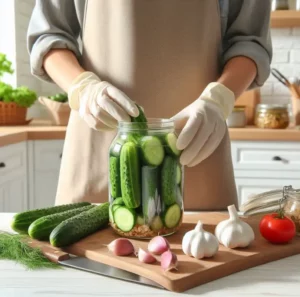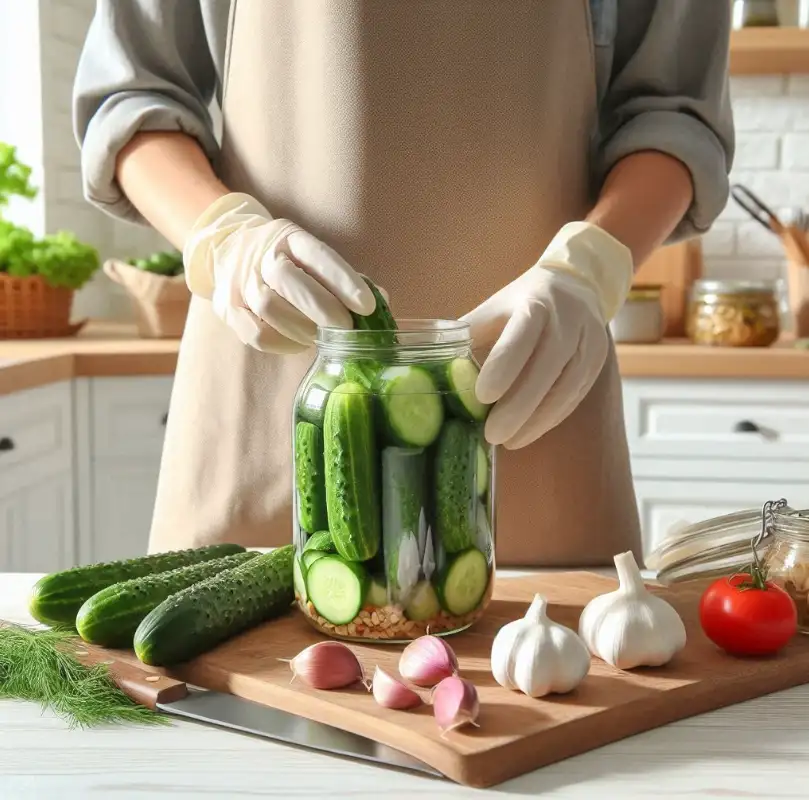You’re excited to make pickles, but nothing’s worse than opening a jar only to find them disappointingly soft and soggy. After all the effort, your crispy pickle dreams seem out of reach.
Imagine popping open a jar to reveal pickles that snap with every bite—crunchy, tangy, and perfectly preserved. Every pickle adds a satisfying texture to your meals and snacks.
Ready to unlock the secret to perfect pickles? With a few essential tips and tricks, you can easily achieve that satisfying crunch every time. Let’s dive into the steps to make your homemade pickles irresistibly crispy!
Why Do Pickles Go Soft?
As soon as they’re picked, cucumbers start to soften due to natural enzymes that break down their structure.
This process can be accelerated during the pickling process if the right precautions aren’t taken. Let’s go over some pro tips to help you keep your pickles crunchy and delicious.
Tips for Crunchy Pickles

1. Choose Freshly Harvested Cucumbers
Freshness matters! Softening begins the moment cucumbers are picked, so it’s best to pickle them within 2-3 days after harvest.
Look for small, firm cucumbers like Kirby or Lebanese cucumbers for the best crunch.
2. Use the Right Pickling Tools
Using a reliable pickling kit can simplify the process. A complete pickle kit includes everything you need to get started and can save time. Grab a kit on Amazon for easy access to all the essentials.
3. Trim Off the Ends
The ends of cucumbers contain enzymes that speed up softening, so be sure to cut off both ends before placing them in jars. This simple step helps maintain their crunchiness throughout the pickling process.
4. Soak in Ice Water
Give your cucumbers an ice water bath for a few hours before pickling. This helps rehydrate them, especially if they’ve been stored in the fridge or transported. Simply place them in a large container with ice water, ensuring they’re fully submerged, and let them soak for 3 hours or overnight.
5. Use Calcium Chloride
Also known as “pickle crisp,” calcium chloride is a must-have for maintaining texture. It prevents enzymes from softening the cucumbers during fermentation. Use around ¼ to ¾ tsp of calcium chloride for each 1L jar.
6. Add a Source of Tannins
Adding grape leaves, oak leaves, or even a tea bag to the jar can introduce tannins, which help maintain the texture of your pickles. Tannins naturally inhibit softening enzymes, so adding a source of tannins can be a game changer.
7. Balance the Salt
Salt plays a crucial role in pickling. Aim for 1.5 to 2 tablespoons of salt per 1L jar. Too much salt will affect taste, while too little can lead to softer pickles. A pickling salt like Morton’s Pickling Salt, available here, is perfect for achieving that balance.

8. Keep Bacteria at Bay
Adding existing bacteria, like sauerkraut juice, may be recommended for other ferments but can make pickles soften faster. Stick to clean jars and fresh brine for the best results.
9. Shorten Fermentation Time
The longer pickles ferment, the softer they’ll become. For optimal crunch, limit fermentation to 5-8 days at room temperature before moving the jars to the refrigerator.
10. Store in a Cool Place
Keeping pickles at a steady, cool temperature of around 17°C (62°F) helps maintain their crunch. A cold basement or a dedicated fermentation fridge works best.
Recipe for Crunchy Garlic Pickles
Try this simple recipe for a batch of perfectly crispy garlic pickles. Here’s what you’ll need:
- 7 freshly picked cucumbers
- 3 garlic cloves
- 1 ½ tablespoons salt
- ¼ teaspoon calcium chloride
- 1 teaspoon pickling spice or dried dill
- Water
Steps:

- Soak and Prep: Cut the ends off each cucumber and soak in ice water for at least 3 hours.
- Prepare the Jar: Place the salt, calcium chloride, spices, and garlic cloves in a 1L glass jar.
- Pack and Fill: Arrange the cucumbers in the jar, pour water to cover, and close the lid.
- Fermentation: Let the jar ferment at room temperature for 5-8 days, then refrigerate to store.
Frequently Asked Questions
- Can I Use Alum for Crunchy Pickles? While alum can improve crispiness, it can be unsafe in large amounts. Calcium chloride is a safer option.
- What Do I Do with Soggy Pickles? Soggy pickles can be chopped into relish or used to marinate vegetables.
Essential Tools for Crunchy Pickles
- Mason Jars: A good mason jar with a tight seal keeps air out, ensuring your pickles stay fresh longer. Check out this highly-rated mason jar set on Amazon.
- Mandoline Slicer: For uniform cucumber slices, a mandoline slicer is essential.
- Digital Thermometer: Maintaining the right temperature during fermentation can make all the difference.
To achieve the crispiest, most satisfying pickles, having the right tools is essential. This Complete Pickle Kit offers everything you need for perfect, crunchy pickles every time, making it a must-have for pickle enthusiasts.
Not only does it save you time and effort, but it also guarantees consistent results without the guesswork.
Don’t wait—take advantage of the Amazon discount available now, so you can get the kit without breaking the bank.
Hurry! The special offer won’t last forever, so check out now and start crafting those irresistibly crunchy pickles before the deal expires!

